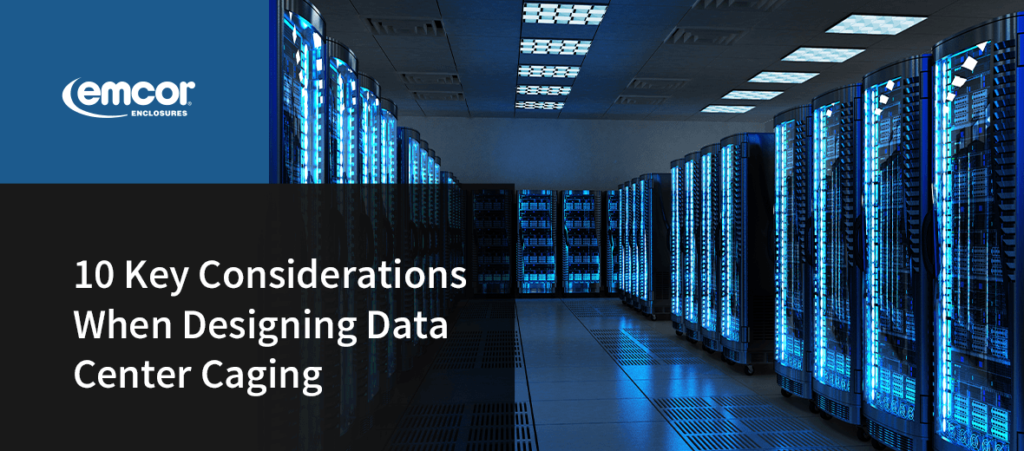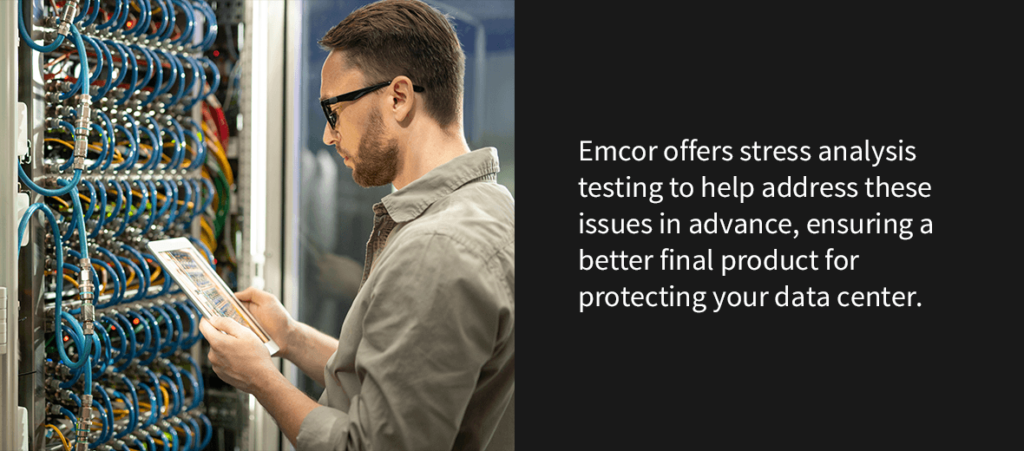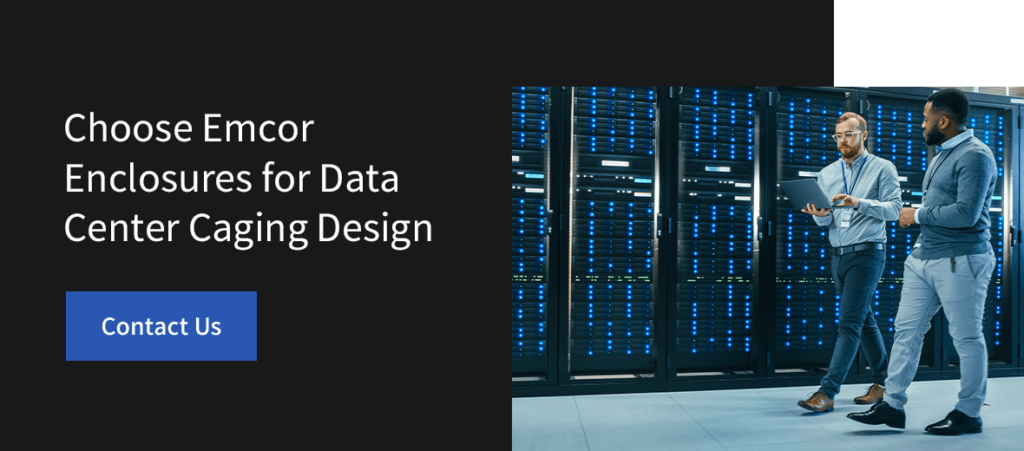10 Key Considerations When Designing Data Center Caging

Computer power is essential for businesses in today’s increasingly digital landscape. Whether you’re selling a product or providing a service that requires large amounts of digital computing to run smoothly, you need the hardware to stay functional. Depending on the size of your organization, you may need more than a few computers — you might be in need of a full-on data center.
Data centers are centralized locations that house networked computer servers. They also contain various computing components like routers, security devices, servers, storage systems, and switches. All this equipment is expensive and essential for powering your organization’s digital needs.
Understanding your security needs is essential to learning how to design a data center. In addition to cybersecurity, your organization’s equipment needs physical protection to ensure it keeps working day after day. Below, you’ll find 10 data center design considerations to help you design data center caging that is perfect for your organization’s needs.
1. Type of Data Center
The type of data center you choose will impact how much space you need and the style of mesh panel you select to protect it. Here are four types of data centers that require caging:
- Enterprise data centers: An enterprise data center is one that a single company privately builds, operates, owns, and uses.
- Managed services data centers: A third-party service provider owns and operates a managed service data center.
- Co-located data centers: While a third party owns a co-located data center, multiple companies use the facility with their own networking equipment and servers.
- Back-room data centers: The smallest type of data center, small businesses often set up back-room data centers in their storage areas.
2. Dimensions
It’s crucial to know how much space your data center needs so you can accurately understand the dimensions you’ll be working with. Talk to a data center caging manufacturer and designer at the beginning of your project for recommendations and guidance regarding your data center caging design.
Standard panels come in heights from eight to 10 feet. If you need custom sizes, you can trust Emcor to design the perfect caging solution for your needs.
3. EMI
Managing electromagnetic interference (EMI) is one of the most important considerations when designing a data center. The right electromagnetic compatibility design will help you achieve greater functional reliability and allow your data center to exist in its intended environment with other devices nearby.
Failing to account for EMI can cause drastic disruptions in your data center’s processes. Designing a data center cage with EMI-control materials that meet pre-compliance testing standards is essential.
4. Power and Cooling
A data center uses energy to power its processes, transforming that energy to heat. Without proper cooling, your components can overheat and suffer potentially irreversible damage.
Your data center’s cage design will need to accommodate your cooling systems. If you need help figuring out how to power and cool your data center while physically protecting it, a professional cage designer like Emcor can offer more insight.
5. Stress Testing
Stress testing will let you know if your data center cage has any design flaws that could put your hardware at risk. Emcor offers stress analysis testing to help address these issues in advance, ensuring a better final product for protecting your data center.
Our stress analysis tests cover many functional requirements, including the following:
- Finite element analysis
- Drop test analysis
- Shock analysis
- Material selection for corrosion resistance, strength, weight, and fatigue resistance
- Fracture mechanics for predicting the growth of cracks
- Impact analysis
- Failure analysis with recommendations for optimizing designs
- Thermal stress and growth prediction

6. Failure Effects and Mechanical Analysis
Emcor offers Failure Modes Effects Analysis (FMEA) for data center cages. This analysis allows us to recognize where failures originate and whether they will likely re-occur. We can also predict the system-wide effect failures can have on a system.
We also provide mechanical analysis to ensure your cage’s parts and assemblies function exactly as you need them to. Reviewing the mechanics lets us create design improvements that give you the best results possible.
7. Visibility
If you want to see your data center through the protective cage, then you need to choose the right materials to make that possible. Data center cages use steel mesh in various opening dimensions and shapes. When selecting your opening size, remember that small openings will decrease visibility, making them better for highly sensitive data centers. Mesh with larger spaces is ideal for increasing visibility in less sensitive data centers.
8. Access
Access refers to one’s ability to physically enter a protected data center. The need for repairs and other manual interventions makes access a critical part of data center cage design.
It is crucial to ensure that authorized individuals have enough space to comfortably and safely enter the data center should the need arise. Adequate access allows them to do what they need to without risking injuries or accidentally damaging a piece of hardware in your data center.
9. Security
While you want authorized personnel to be able to access your organization’s data center, you also want to keep all unauthorized individuals out. This concern is why it’s essential to consider a data center cage’s security.
Depending on your application, you may want to include a swinging door in your data center cage design. Swinging doors have the most flexible handle and locking mechanisms to suit various needs, ensuring you can keep your data center locked and safe whenever authorized access is unnecessary.
10. Plans for Expansion
If your organization expects to make changes to your data center layout or predicts that expansion may be on the horizon, it’s important to design your data center cage to accommodate that expansion. By building a larger cage than you need now, you will have a much easier time adding more data center hardware in the future. Consider whether your organization will expand its data center and design your data center rack layout accordingly.
Choose Emcor Enclosures for Data Center Caging Design
Are you ready to achieve the ideal data center cage to meet your organization’s needs? Emcor Enclosures offers data center cage design services that create the perfect cage to protect your equipment. Browse our products online and discover our unique services to see how we can help you achieve your goals.
If you’d like to learn more or take the next step, contact us online today.
